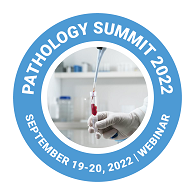Dr. Arben Preza
Pediatric Hospital, UHC Mother Teresa Albania
Title: Characteristics of Brain Tumours in Childhood
Biography
Biography: Dr. Arben Preza
Abstract
Cerebral tumours can often be found in children are and can be benign and malignant. After leukaemia, childhood brain tumour is the second most common type of cancer in all children worldwide. Typically, brain tumours in children arise from different tissues than those affecting adults. Posterior fossa tumours are frequent, almost as much as supratentorial ones, although they also depend on age. Supratentorial tumours are more common in children younger than 3 years, while posterior fossa tumours predominate in children 3 to 11 years old. After this age, the incidence of these supra and infra tentoria tumours is the same. According to the 2007 WHO classification, tumours are classified according to type and histological grade (degree of malignancy). Benign tumours are grade 1 and 2, while grade 3 and 4 are malignant tumours. In children, there is a pronounced heterogeneity of histological types, both in malignant and benign tumours. In 80% of cases, primary neuroepithelial tumors are encountered, while 3-5% is craniopharyngeoma and germ cell tumors.
The commonest of the neuroepithelial tumours are the gliomas (30 - 50%), particularly pilocytic astrocytoma (20% of primary neuroepithelial tumours), followed in descending order by neuronal and mixed glioneuronal tumours, which account for approximately 19% embryonic tumours, which account for 17% and ependymomas which account for approximately 11%. Treatment can be surgical, radiosurgical, radio therapeutic or chemotherapeutic. Not infrequently, a combination of different modalities may be necessary, which is carried out in collaboration with colleagues from other services such as: neuropediatrics, neuroimaging, infant surgery, paediatric intensive care unit, oncohematology. Recently the surgical techniques, tools in the operating room and anaesthesia techniques have improved, making interventions safer. Also, complementary modalities (radiotherapy/chemotherapy) have advanced.

